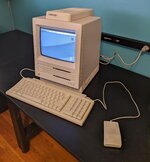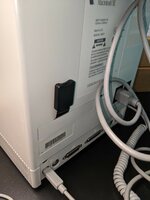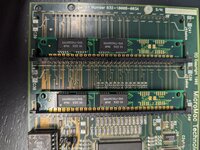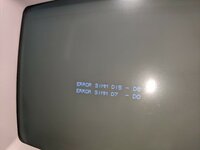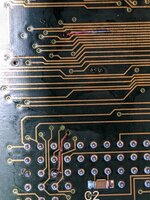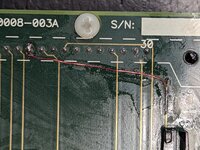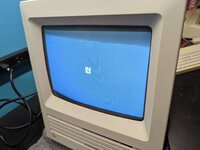Now that I have better equipment and some trace repair experience under my belt, I think I'm going to tackle getting this accelerator working again. The consensus a year ago was there's a continuity break somewhere (probably due to leaky cap damage) that's keeping it from seeing a couple of the SIMMs.
Pretty much all of the vias under each capacitor look corroded. However, they all appear to go to either the power or ground planes (4-layer board). So, I checked continuity from each capacitor's solder pads to either the power or ground pin on one of the logic ICs and all had good continuity.
So that hopefully narrows it down to one or some of the corroded-looking traces around the board:
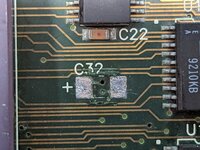
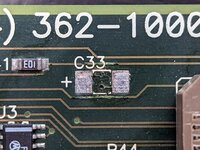
There are more like that, but you get the idea. So, time to start scraping solder mask and checking traces I guess



 Got a phone
Got a phone  with an excellent camera
with an excellent camera  and a flexible stand to hold the phone that clips on the table? It could help. You got this!
and a flexible stand to hold the phone that clips on the table? It could help. You got this! 

